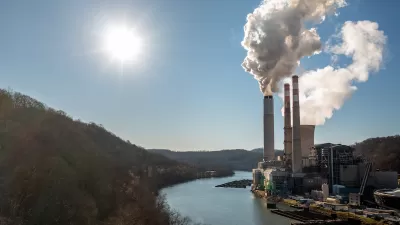The EPA issues its first national standards for mercury pollution from power plants, requiring a dramatic reduction of pollutants 90% by 2016.
This new rule, first authorized in the 1990 Clean Air Act amendments, is a win for environmentalists who were furious with the White House for dropping EPA's review of ozone limits earlier in 2011.
The EPA estimates that compliance with the rule will cost the power plant industry $9.6 billion, and provide health benefits of $37 billion. Opponents of the measure charge that the new regulations will cost the country too much to justify.
John H. Broder reports: "Scott H. Segal, who represents utilities that will be affected by the new rule, said that the E.P.A. was playing down the costs and double-counting the benefits. 'The bottom line,' he said in an analysis of the regulation, "this rule is the most expensive air rule that E.P.A. has ever proposed in terms of direct costs. It is certainly the most extensive intervention into the power market and job market that E.P.A. has ever attempted to implement.' "
The new rule is formally known as the Mercury and Air Toxics Standards, or MATS.
The EPA estimates that the new safeguards will prevent as many as 11,000 premature deaths and 4,700 heart attacks a year. The standards will also help America's children grow up healthier – preventing 130,000 cases of childhood asthma symptoms and about 6,300 fewer cases of acute bronchitis among children each year. According to the EPA Power plants are the largest remaining source of several toxic air pollutants, including mercury, arsenic, cyanide, and a range of other dangerous pollutants, and are responsible for half of the mercury and over 75 percent of the acid gas emissions in the United States.
Shortly after the announcement, The White House released a video in which the president discusses the rules:
FULL STORY: E.P.A. Issues Limits on Mercury Emissions

Alabama: Trump Terminates Settlements for Black Communities Harmed By Raw Sewage
Trump deemed the landmark civil rights agreement “illegal DEI and environmental justice policy.”

Planetizen Federal Action Tracker
A weekly monitor of how Trump’s orders and actions are impacting planners and planning in America.

The 120 Year Old Tiny Home Villages That Sheltered San Francisco’s Earthquake Refugees
More than a century ago, San Francisco mobilized to house thousands of residents displaced by the 1906 earthquake. Could their strategy offer a model for the present?

Indy Neighborhood Group Builds Temporary Multi-Use Path
Community members, aided in part by funding from the city, repurposed a vehicle lane to create a protected bike and pedestrian path for the summer season.

Congestion Pricing Drops Holland Tunnel Delays by 65 Percent
New York City’s contentious tolling program has yielded improved traffic and roughly $100 million in revenue for the MTA.

In Both Crashes and Crime, Public Transportation is Far Safer than Driving
Contrary to popular assumptions, public transportation has far lower crash and crime rates than automobile travel. For safer communities, improve and encourage transit travel.
Urban Design for Planners 1: Software Tools
This six-course series explores essential urban design concepts using open source software and equips planners with the tools they need to participate fully in the urban design process.
Planning for Universal Design
Learn the tools for implementing Universal Design in planning regulations.
Clanton & Associates, Inc.
Jessamine County Fiscal Court
Institute for Housing and Urban Development Studies (IHS)
City of Grandview
Harvard GSD Executive Education
Toledo-Lucas County Plan Commissions
Salt Lake City
NYU Wagner Graduate School of Public Service



























